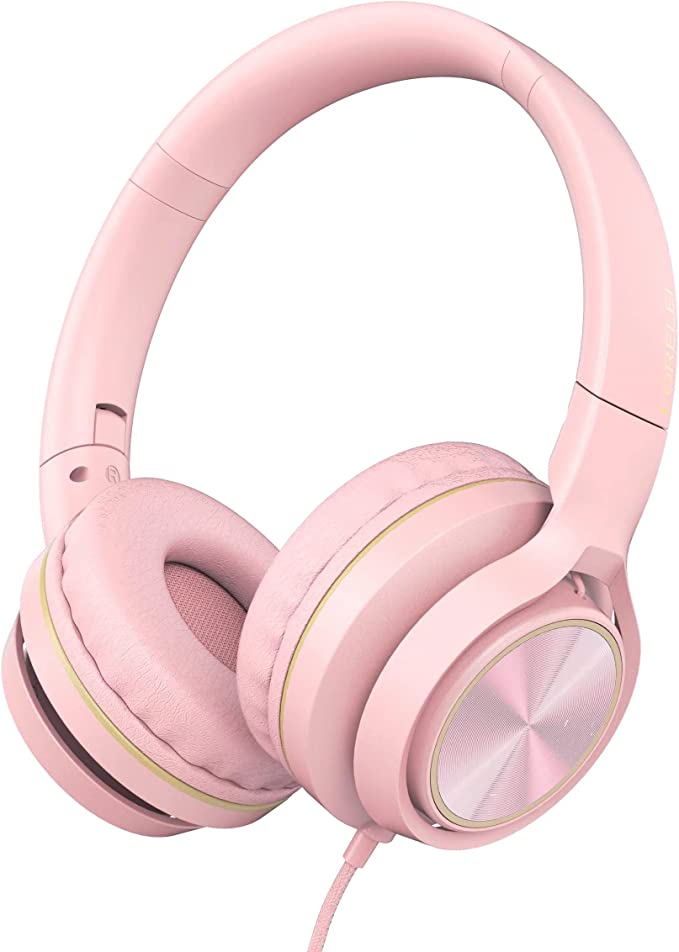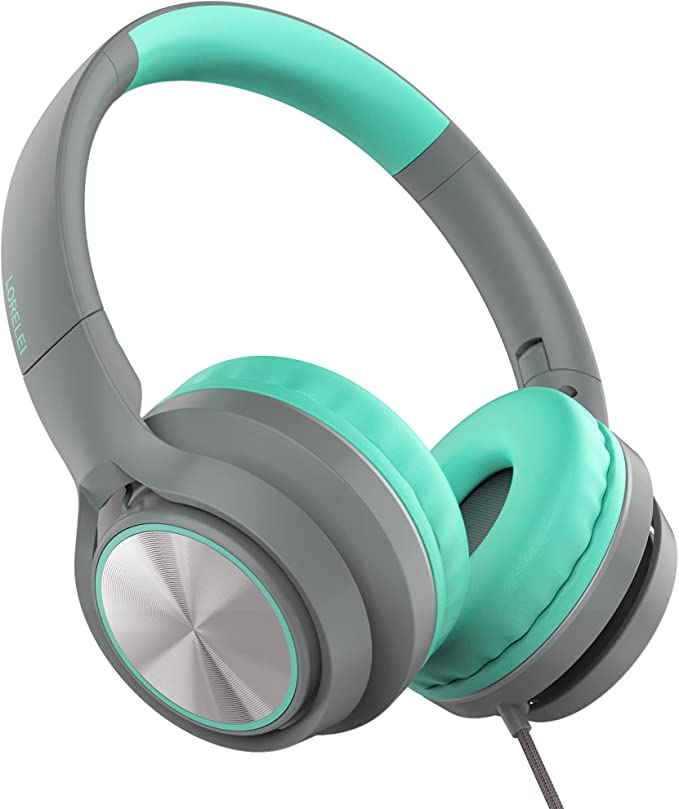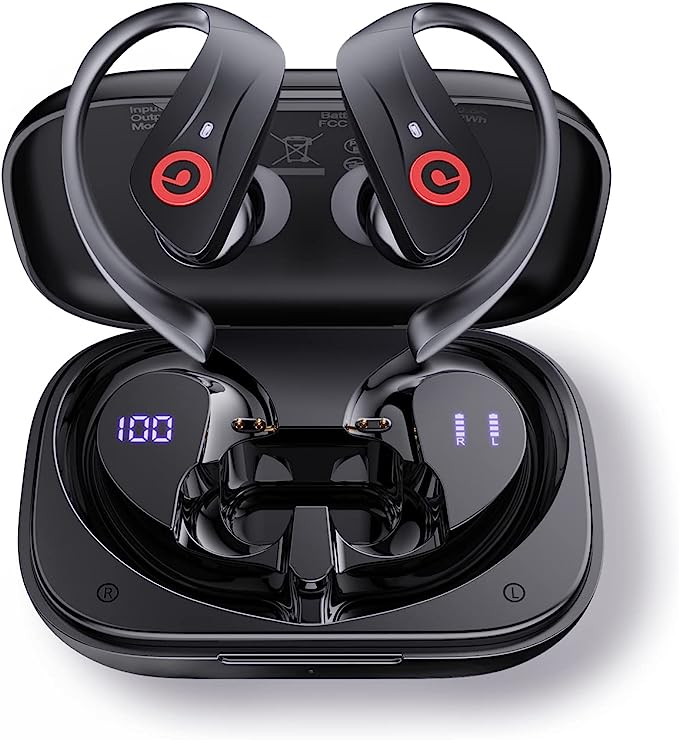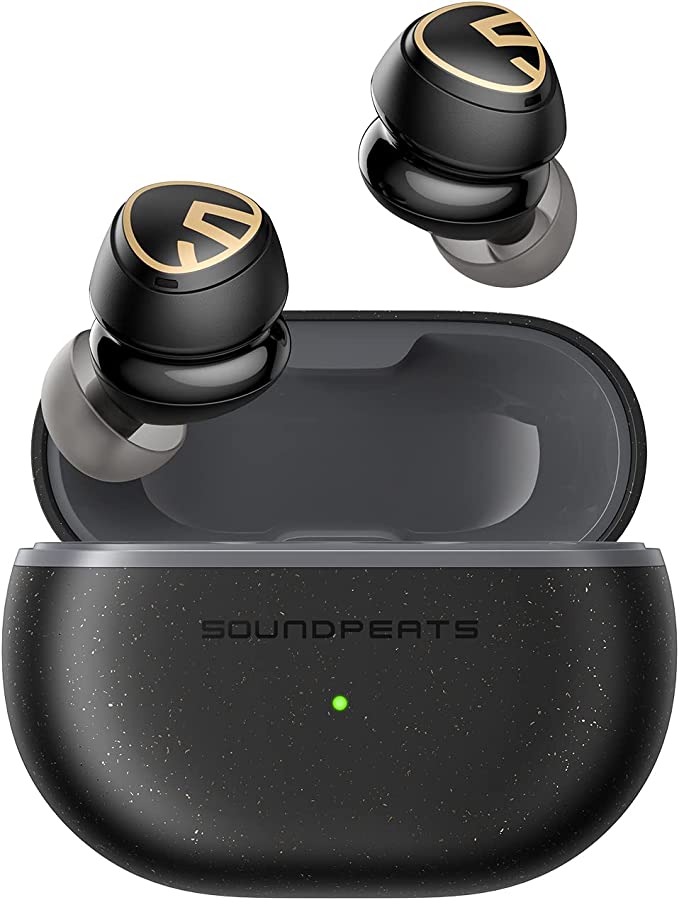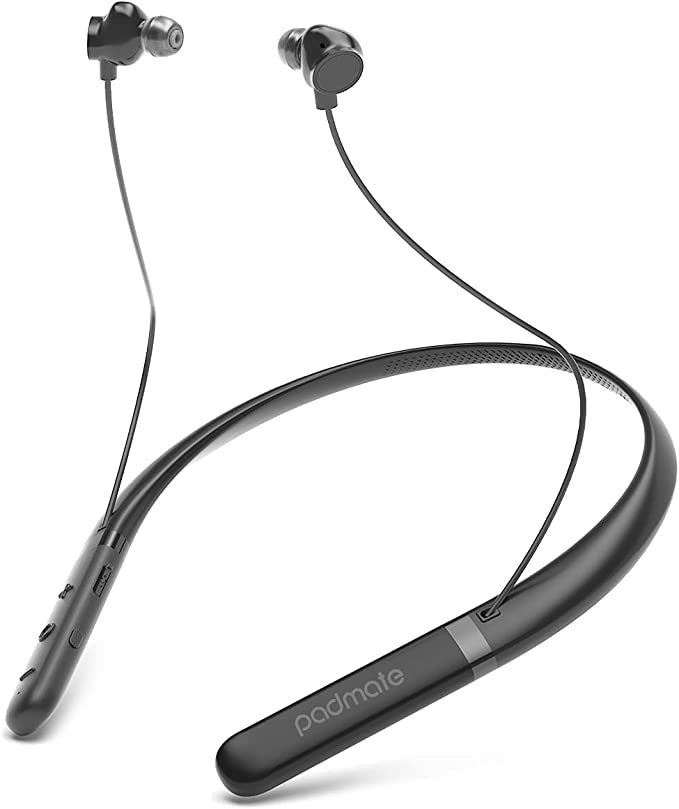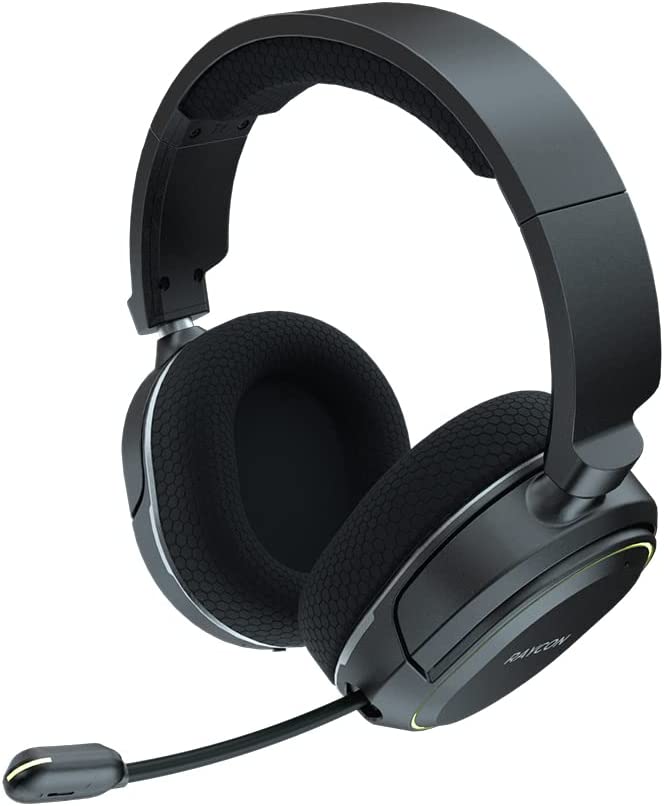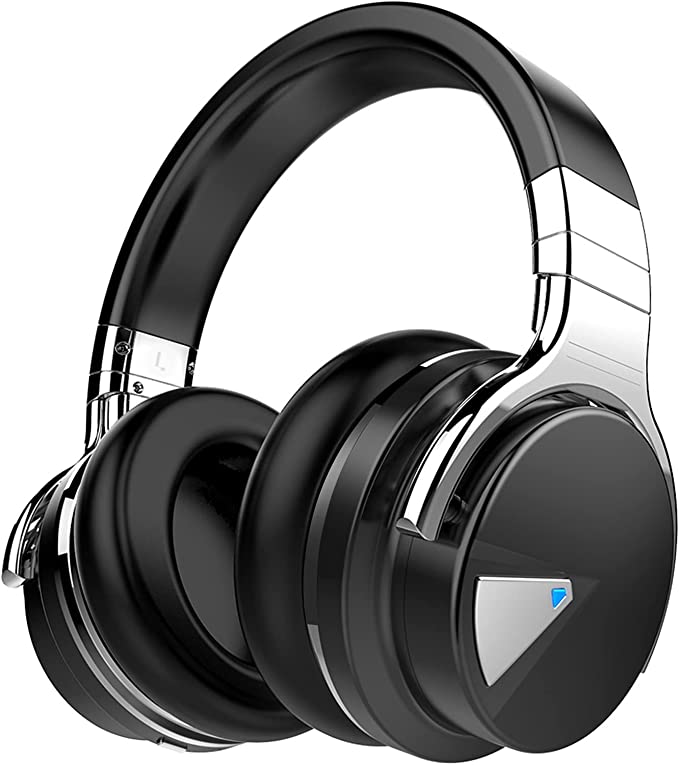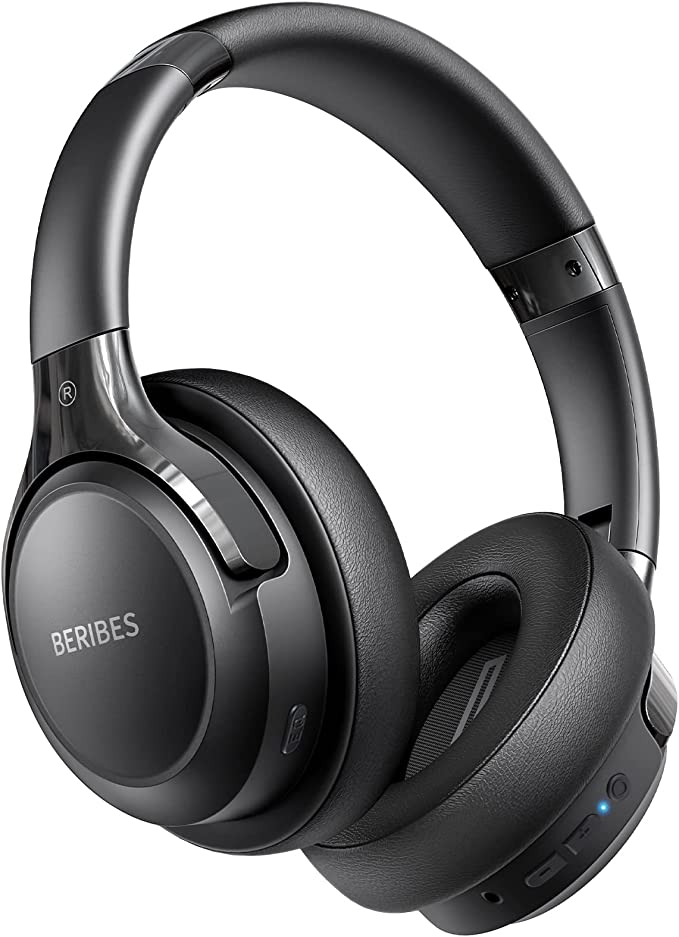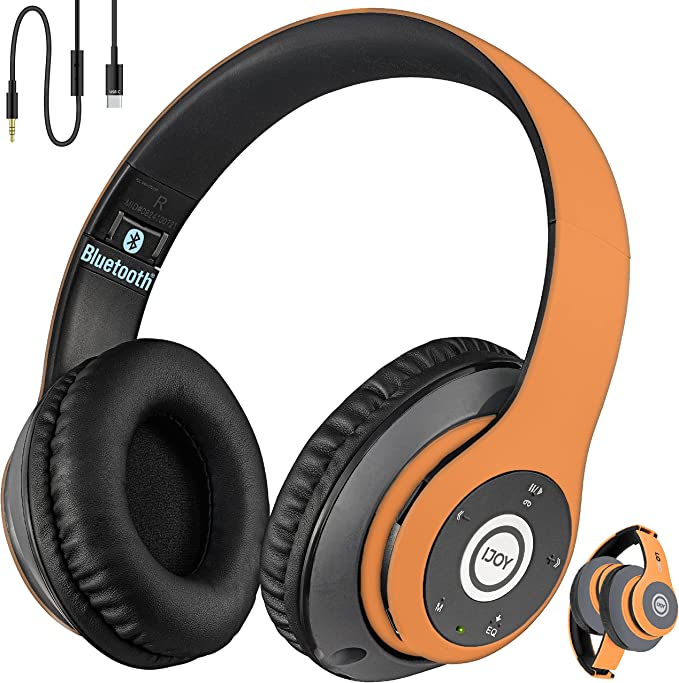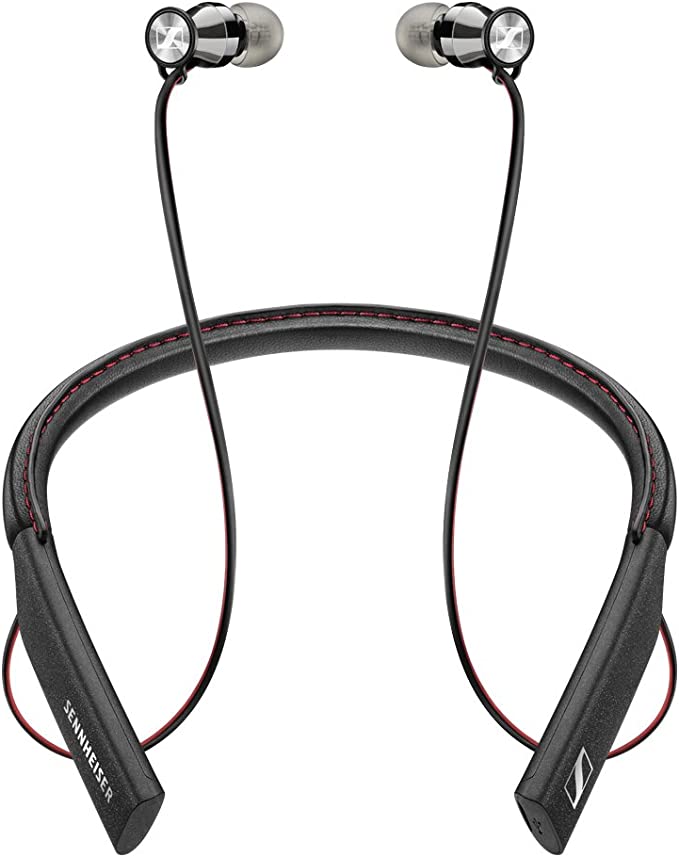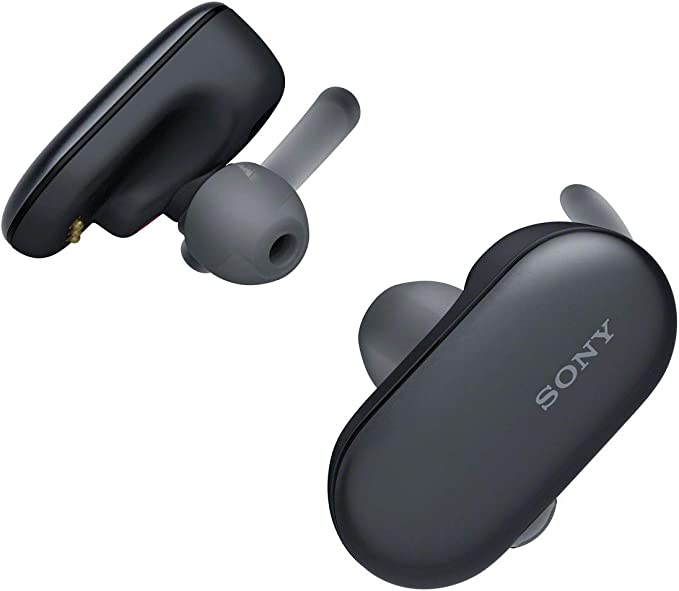LORELEI B-C5 On-Ear Wireless Headphones: Exploring the Science of All-Day Audio Freedom
Update on May 15, 2025, 4:15 a.m.
We live in a world saturated with sound, much of it curated and delivered personally, wirelessly, almost as an extension of our own senses. From the focused calm of a noise-isolating commute to the shared laughter profissionais_a_bordo_do_navio_of_a video call with loved ones continents away, personal wireless audio has become an invisible, indispensable thread in the fabric of modern life. It’s easy to take for granted the sleek, lightweight headphones nestled on our ears, pumping out everything from symphonies to podcasts. But have you ever paused to consider the intricate dance of physics, chemistry, and engineering that makes this everyday magic possible?
Let’s embark on a journey “under the hood,” using the common example of on-ear wireless headphones, much like the LORELEI B-C5, not as a product review, but as a tangible lens through which we can explore the fascinating science that powers our personal soundscapes. This isn’t just about one device; it’s about appreciating the quiet revolution that has transformed clunky, tethered contraptions of yesteryear into the sophisticated audio companions we rely on today.

The Invisible Tether – Demystifying Bluetooth and Wireless Freedom
The term “Bluetooth” has become synonymous with wireless connectivity, a household name. But what is it, truly? Far from a mystical force, Bluetooth is a standardized short-range wireless technology that uses UHF radio waves in the ISM bands (from 2.400 to 2.485 GHz) to transmit data between devices. Think of it as an incredibly sophisticated, invisible conductor, orchestrating a seamless dialogue between your headphones and your audio source.
Its rather poetic name harks back to Harald “Bluetooth” Gormsson, a 10th-century Danish king famed for uniting disparate Danish tribes. In a similar vein, the technology, initially conceived by Ericsson in Sweden in 1994, was envisioned to unite different communication protocols from various devices. Today, the Bluetooth Special Interest Group (SIG), a consortium of over 35,000 member companies, collaboratively develops and licenses the Bluetooth standards, ensuring that devices from countless manufacturers can speak the same wireless language.
When you see a specification like “Bluetooth 5.3,” as found in many contemporary headphones including the LORELEI B-C5, it signifies a specific iteration of this evolving standard. Each version typically brings enhancements. Bluetooth 5.3, for example, builds upon its predecessors with features aimed at improving connection reliability, reducing power consumption, and enhancing security. It allows for more efficient data broadcasting and can even help devices switch between busy and less busy radio frequencies more intelligently, leading to a more stable audio stream – fewer frustrating dropouts during your favorite song or crucial call. This efficiency is a quiet hero, contributing significantly to the extended battery life many users now expect and appreciate.
The pairing process, that initial “digital handshake” between your headphones and, say, your smartphone or tablet, is a masterpiece of cryptographic choreography. In simplified terms, when you set your headphones to pairing mode, they broadcast a signal. Your phone detects this, and they exchange security keys, establishing a trusted relationship. Once paired, they remember each other, making future connections almost instantaneous. This ability to effortlessly connect to a multitude of devices—be it an iPhone, an Android tablet, or a Kindle Fire, as users of devices like the B-C5 often do—is a testament to Bluetooth’s versatility. The ultimate reward? The sheer, unadulterated joy of untangled movement, the freedom to roam, dance, or simply relax without being physically tethered to your audio source.

The Pocket Powerhouse – The Science of Sustained Sonic Journeys
This wireless freedom, however, would be fleeting without a reliable power source. The Achilles’ heel of any portable electronic device is its battery, and for headphones designed for hours of daily use, the challenge is to pack substantial energy into a small, lightweight package. This is where the unsung hero of modern wearables, the Lithium-Polymer (Li-Po) battery, steps onto the stage.
Unlike their cylindrical Lithium-Ion cousins, Li-Po batteries utilize a polymer electrolyte instead of a liquid one. This allows them to be manufactured in more flexible shapes and thinner profiles, making them ideal for the constrained spaces within headphone earcups. But their real magic lies in their electrochemistry. A Li-Po battery, at its core, involves a positive electrode (cathode), a negative electrode (anode), and the electrolyte separating them. During discharge – when you’re listening to music – lithium ions ($Li^+$) travel from the anode, through the electrolyte, to the cathode, generating the flow of electrons (current) that powers your headphones. When you recharge, an external voltage forces those ions back to the anode, ready for the next cycle.
Achieving a playtime of around 30 hours, a feature often highlighted in headphones like the LORELEI B-C5 and highly rated by users, isn’t solely reliant on a large battery. It’s a carefully orchestrated balancing act:
- Battery Capacity ($mAh$): The fundamental measure of how much charge the battery can hold.
- Component Efficiency: This is where Bluetooth 5.3’s lower power consumption plays a vital role. The audio processing chips and amplifiers within the headphones are also designed for frugality.
- Power Management Software: Intelligent software can optimize power usage, for instance, by putting parts of the circuitry to sleep when not actively in use.
The result for the listener is a significant reduction in “charge anxiety.” The ability to go for several days, or an entire long-haul journey, without desperately seeking a power outlet is a liberating experience. And when that time does come, the adoption of USB-C as a charging standard, as noted by users of many modern devices, adds another layer of convenience with its reversible connector and often faster power delivery capabilities. It’s this thoughtful synergy of chemistry and engineering that keeps your personal soundtrack playing on.

Crafting Worlds of Sound – Drivers, Acoustics, and the On-Ear Paradigm
At the very heart of your headphones, the components responsible for transforming electrical signals into the sound waves that caress your eardrums are the drivers. Think of a headphone driver as a miniature, precision-engineered loudspeaker. Typically, it consists of a diaphragm (a thin, semi-rigid membrane), a voice coil (a coil of fine wire attached to the diaphragm), and a magnet system. When an electrical audio signal from your device flows through the voice coil, it creates a fluctuating magnetic field. This field interacts with the permanent magnet, causing the voice coil—and thus the attached diaphragm—to vibrate rapidly. These vibrations push and pull the air, creating pressure waves: the sound you hear.
The LORELEI B-C5, like many portable headphones, employs an “on-ear” (or supra-aural) design. This means the earcups rest directly on your outer ears, as opposed to completely enclosing them (over-ear) or fitting inside the ear canal (in-ear). This design choice is a deliberate compromise, offering a unique blend of characteristics:
- Portability and Comfort: On-ear headphones are generally more compact and lighter than their over-ear counterparts, making them easier to carry and often more comfortable for some users during extended periods, especially in warmer conditions.
- Sound Presentation: They can offer a more open sound experience than some in-ear models, and well-designed on-ear drivers can certainly deliver a satisfying audio performance, with users of various on-ear models often praising aspects like “great bass” or “good sound quality.”
- Passive Noise Isolation: By covering the ears, they provide a degree of passive noise isolation, physically blocking some ambient sound. This isn’t the active noise cancellation (ANC) found in more specialized headphones, which uses microphones and electronics to actively counteract external noise. Instead, it’s a gentle muffling of the outside world, which many find sufficient for daily commutes or focused listening.
- Awareness and Leakage: A characteristic of many on-ear designs is that they don’t create a perfect seal around the ear. This can mean some sound from the headphones might be audible to those nearby (sound leakage), especially at higher volumes. Conversely, it can also allow the listener to maintain a degree of awareness of their surroundings, which can be a safety benefit if used while walking or running outdoors. One LORELEI B-C5 user noted “major sound leak” but found it acceptable for their specific running use-case, highlighting this trade-off.
Ultimately, the goal of any headphone design, including LORELEI’s stated mission to help people “discover new and interesting sounds and enjoy them,” is to translate the artist’s intent into an engaging and pleasurable listening experience. The on-ear paradigm offers one particular path to achieving that, balancing practicality with sonic engagement.

The Ergonomic Embrace – Designing for Comfort and Everyday Life
While the internal electronics and acoustic design are critical for sound reproduction, the physical design—the ergonomics—is paramount for how a pair of headphones integrates into our daily lives. If a headphone is uncomfortable, sounds tinny, or is a hassle to use, its advanced internal technology counts for little.
- The Science of “Lightness”: Headphones like the LORELEI B-C5, weighing around 174 grams (6.1 ounces), are designed with extended wear in mind. The choice of lightweight plastics, optimized internal components, and carefully designed headbands all contribute. The physics is simple: less mass means less force exerted on your head and ears, reducing pressure points and the potential for listener fatigue over hours of use.
- Engineered for Mobility: The foldable design seen in many travel-friendly headphones is a small feat of mechanical engineering. Hinges and swivels must be durable enough for repeated use yet allow the headphones to collapse into a more compact form for stowing in a bag—a feature often appreciated by students, commuters, and travelers. Some models, as noted by users, even come with a pouch for added protection.
- The Unsung Microphone: The tiny aperture housing the built-in microphone enables a world of hands-free communication. Modern microphones in headphones often use MEMS (Micro-Electro-Mechanical Systems) technology, which allows for surprisingly good voice capture from a very small component, making clear calls or voice assistant interactions possible.
- A Fit for (Almost) All: Human heads and ears come in a remarkable variety of shapes and sizes. Good headphone design incorporates adjustability—extendable headbands, pivoting earcups—to provide a secure and comfortable fit for a wide range of users, from children with smaller heads (a demographic some user reviews suggest the B-C5 serves well) to adults.
These ergonomic considerations are not afterthoughts; they are integral to the user experience, ensuring that the technology serves the human, not the other way around.

The Ethos of the Maker – Marrying Accessibility with the Pursuit of Quality
Beyond the tangible components and measurable specifications, there’s often a guiding philosophy or mission that shapes a product. For a company like LORELEI, founded in 2016 with the stated goal of “making sound better and more accessible,” this implies a commitment not just to acoustic performance but also to ensuring their technology can reach and be enjoyed by a broad audience.
The claim of a “99% qualified products rate” and a dedication to “constantly improving it” speaks to the inherent challenges and aspirations in mass manufacturing. Bringing any electronic device from a design blueprint to millions of units in the hands of consumers involves complex supply chains, intricate assembly processes, and rigorous quality control. No manufacturing process is absolutely perfect, and isolated issues can occur with any product, as occasionally reflected in diverse user feedback for any widely sold item. However, a stated commitment to high qualification rates and continuous improvement signifies an ongoing effort to deliver reliable and satisfying experiences.
The true art lies in taking complex technologies—Bluetooth protocols, advanced battery chemistry, acoustic engineering—and packaging them into a product that is intuitive to use, comfortable to wear, and provides genuine value, whether for a child connecting to an iPad, a teen engrossed in music, or an adult needing a reliable audio tool for travel or work.

Conclusion: Hearing the Harmony of Human Ingenuity
The next time you slip on your wireless headphones, take a moment. Consider the decades of research, the breakthroughs in material science, the intricacies of software engineering, and the fundamental principles of physics and chemistry all harmonizing to deliver that seamless stream of sound. From the almost magical dance of Bluetooth radio waves to the tireless work of the lithium ions in the battery, and the precise vibrations of the driver diaphragm, a modern pair of headphones, exemplified by devices like the LORELEI B-C5, is a pocket-sized testament to human ingenuity.

Understanding a little of the “how” and “why” behind these everyday marvels doesn’t diminish their magic; if anything, it deepens our appreciation. It empowers us as consumers to make more informed choices and allows us to marvel at the symphony of science that, quite literally, resonates in our ears. And as technology continues its relentless march, one can only listen with anticipation for what new innovations will shape the future of our personal audio experiences, making them ever more immersive, intelligent, and integrated into the rhythm of our lives.
